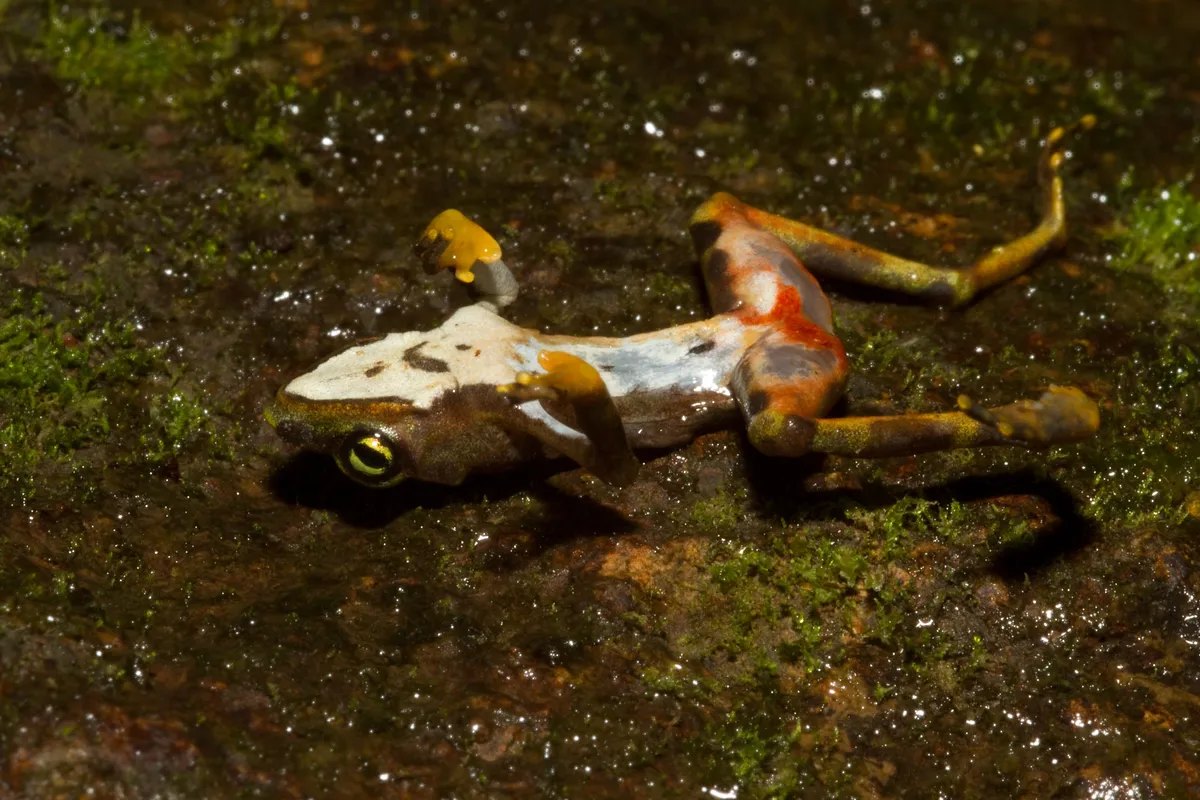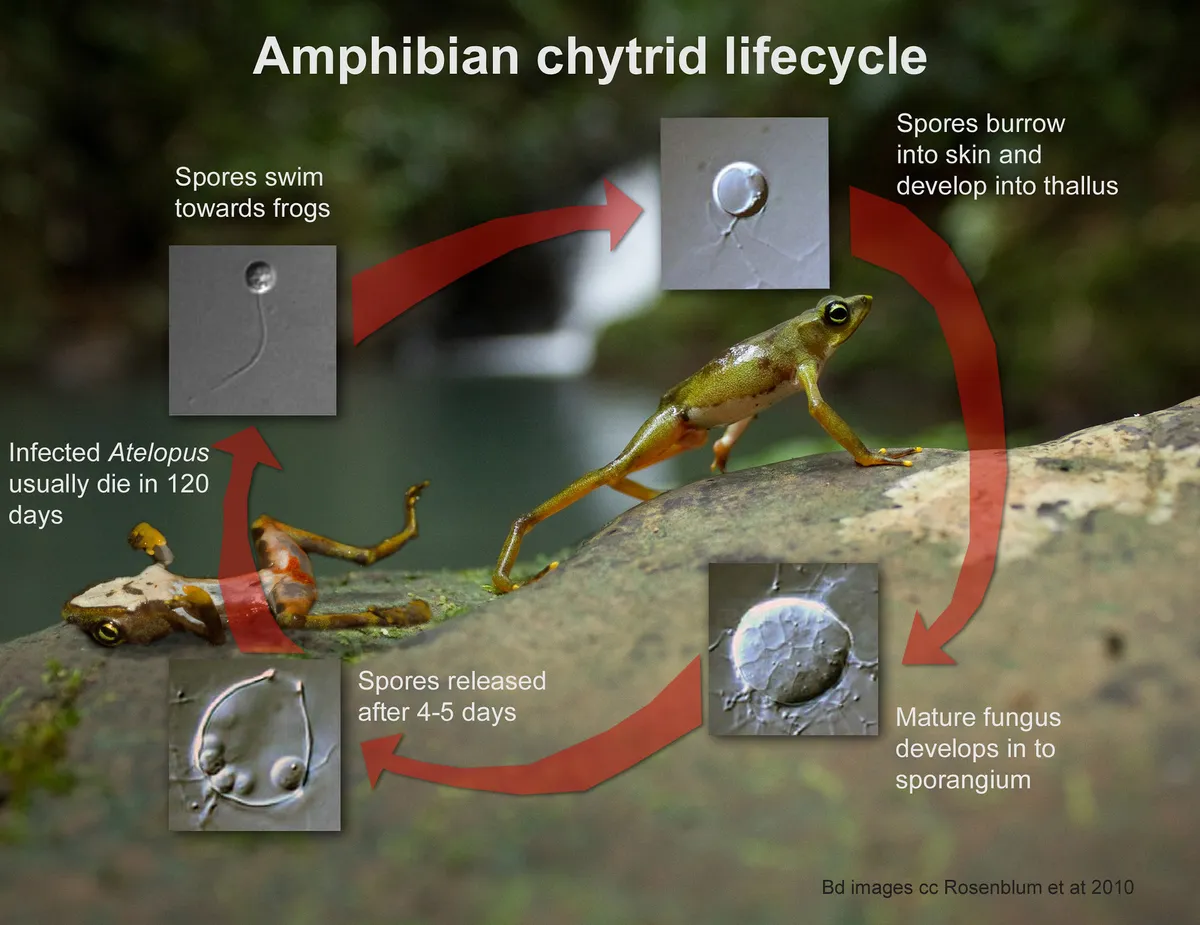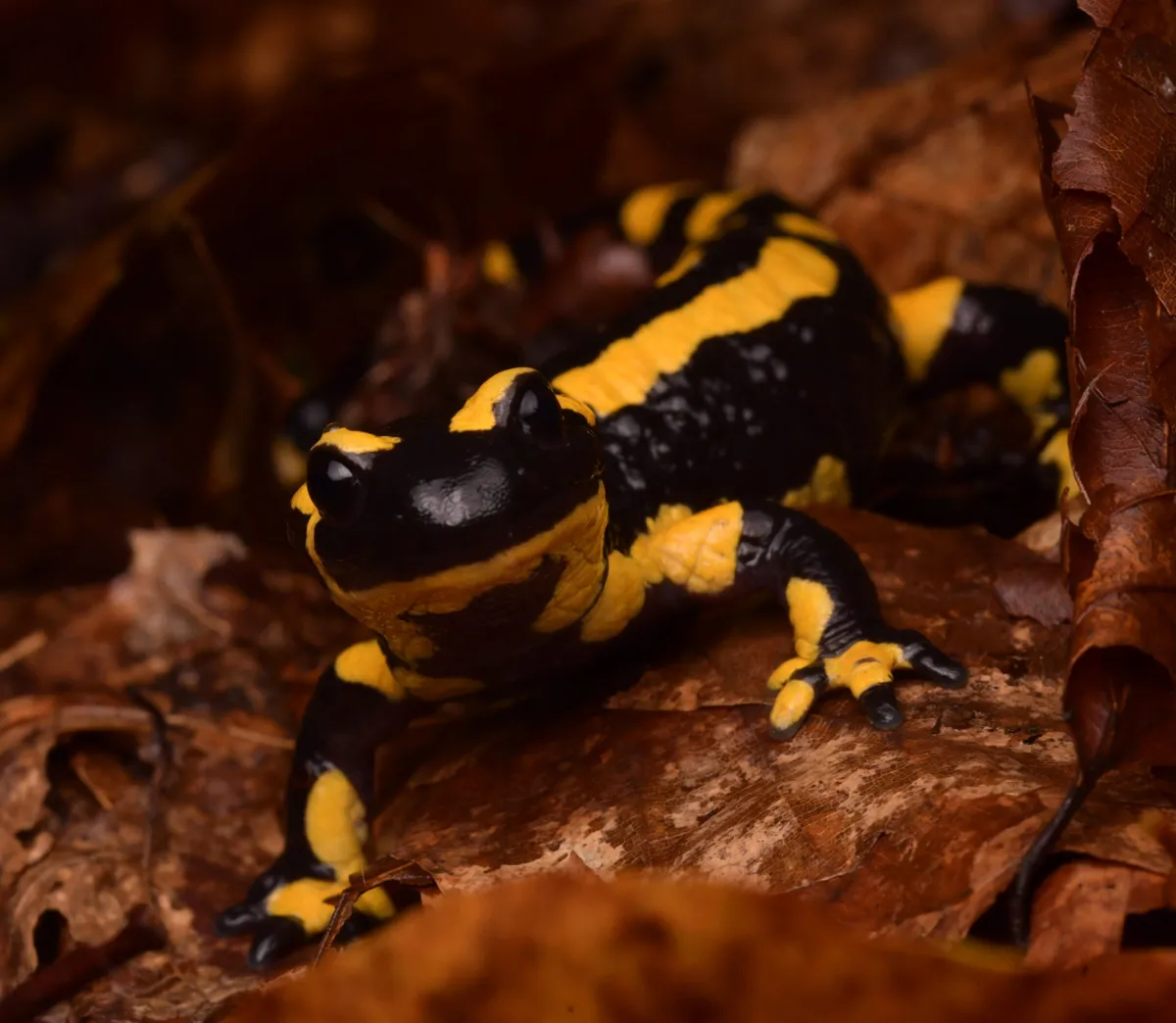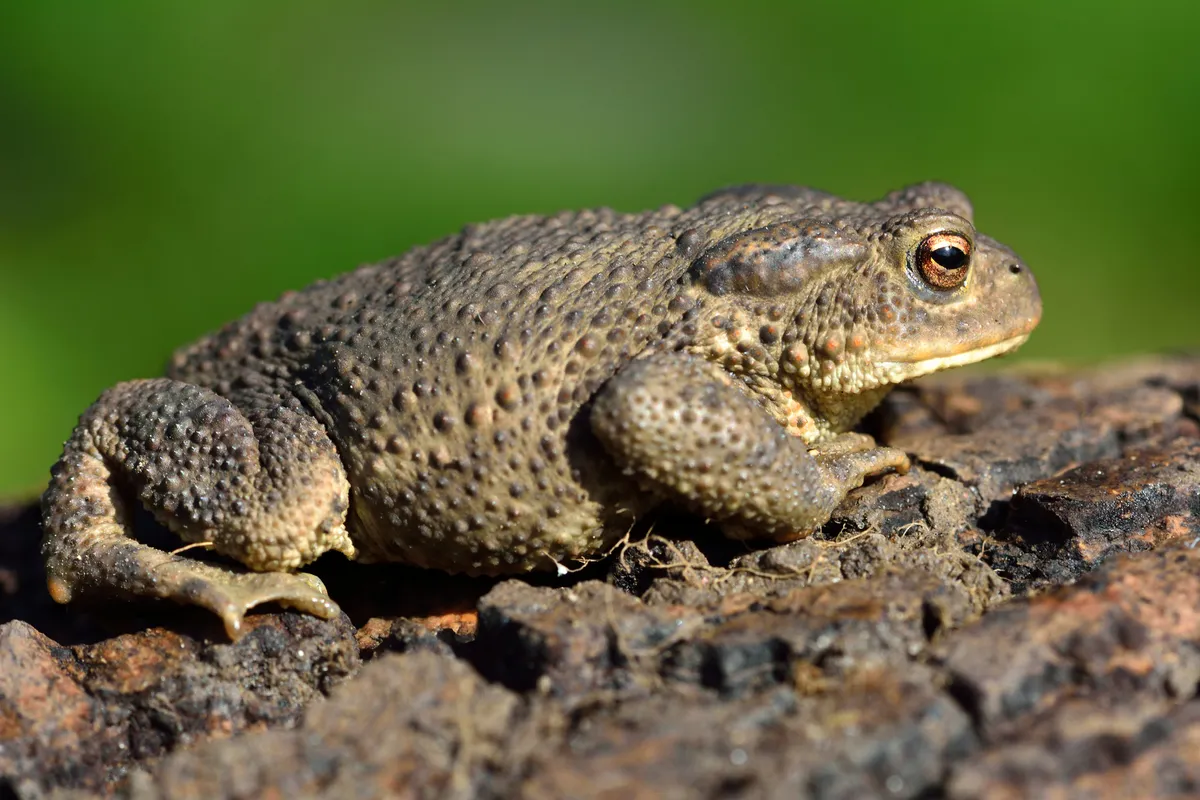Learn more about chytridiomycosis in our expert guide from the Amphibian Survival Alliance.
What is chytridiomycosis?
Chytridiomycosis is a disease caused by two pathogenic chytrid fungi, Batrachochytrium dendrobatidis (Bd) and B. salamandrivorans (Bsal). It infects the skin of numerous amphibian species leading to mortality of many of them.
Bd was discovered in the 1990s as the cause of large scale amphibian declines around the world. Bsal was only recently discovered in 2013 in association with massive population declines of fire salamander in Europe.
Where did chytridiomycosis come from?
Both of these fungi are thought to originate in Asia (likely Korea). Frogs and salamanders there can be found with these pathogens on their skin but they don’t develop the disease because they have evolved with the fungus over a long time period.
Globalization and activities like the amphibian pet trade have spread these pathogens to new regions of the world where the frogs and salamanders are not adapted to them.

How does chytridiomycosis affect amphibians?
For amphibians, their skin is a very vital organ. It provides a protective barrier and is also used for breathing and drinking. The chytrid fungi infect the skin and disrupt this vital organ. Both pathogens can increase reddening of the skin and increase skin shedding.
Bd is considered to be lethal to amphibians because it disrupts the ion transport across the skin leading to a potassium imbalance, resulting in cardiac arrest.

Bsal creates tiny holes (lesions) all over the skin, and these dozens of miniature wounds allow pathogenic bacteria to colonize the internal organs ultimately causing septicemia and death.
Are any amphibians resistant to chytridiomycosis?
One glimmer of hope in the devastation caused by these two fungi is there are frog and salamander species that do not develop the disease. Some species are resistant and others can carry the pathogen, but do not present any disease symptoms.
These species that can survive are a great way for scientists to understand effective defense mechanisms against chytridiomycosis, which can in turn help develop disease mitigation strategies for those species that lack effective defenses.
Does chytridiomycosis affect just amphibians?
Chytridiomycosis is mainly a disease of amphibians, but there is some research that has shown that crayfish (an invertebrate) can also develop disease after being exposed to Bd. Understanding alternative hosts of these deadly pathogens is a critical and active area of research for many scientists.
What is the significance of chytridiomycosis and how many species has it affected?
Chytridiomycosis of amphibians is considered the greatest disease threat to animal diversity. The declines caused by Chytridiomycosis have been considered a part of the sixth mass extinction currently underway.
Recent research showed that 501 species are thought to have declined because of chytridiomycosis. In tropical highland regions like those in Panama over 40% of the amphibian community collapsed in the early 2000s.
Watch a video summarising the recent paper:
Please note that external videos may contain ads
Produced by Katie Garrett & Jonathan Kolby
How does chytridiomycosis spread?
How these pathogens have spread regionally and globally so rapidly has been a mystery researchers have been trying to solve. Globalization and activities like the amphibian pet trade have played a part in spreading these pathogens to new regions of the world. The trade of American bullfrogs and African clawed frogs (both of which are carriers) have been implicated.
On a smaller scale, amphibian to amphibian contact and water can spread the pathogen. The fungal zoospores can swim around in water in search of a new amphibian host. The spores can also travel in wet mud in boots or on equipment.

What is being done about chytridiomycosis?
Chytridiomycosis is a big beast to fight, but there many things that can be done to minimize the impact of these pathogens. Something that everyone, the public, wildlife managers and researchers alike, can do to prevent the spread of these pathogens is to clean your foot ware.
One possibility would also be to add cleaning stations at trailheads. If you are traveling to a new natural area you can clean your boots with 10% alcohol or a mild bleach solution.
With Bsal, which currently has a restricted invasive range in Central Europe, we can work to minimise its spread around to new regions. Bsal is particularly lethal to salamanders therefore investing in ways to prevent its introduction into North America, which is a salamander biodiversity hotspot (most species in the world).

The US Fish and Wildlife Service and the Canadian government have placed importation restrictions on many salamander species in effort to prevent arrival. While this is an important step, it is very difficult to control movement of microscopic pathogens so it’s also critical to be proactive in developing disease management or mitigation strategies.
Researchers are exploring using skin probiotics for amphibians, which adds beneficial microbes to the amphibian’s skin, that can help then fight off the pathogen.
Others are exploring vaccination strategies that can boost the amphibian’s immune system; research is exploring vaccine baths so individual injections wouldn’t be needed.
There is some evidence that there is a genetic basis to resistance to Bd so a selective breeding program for at risk species might be a fruitful option.
In the meantime, captive breeding of species extinct in the wild, such as the highly susceptible Panamanian golden frog, are keeping species alive until successful mitigation options are found. These captive breeding centers give us the opportunity to get frogs back on the landscape that have been lost because of chytrid.
How can suspected chytridiomycosis be reported?
There are disease alert systems in place in many countries. In the US, you can submit information to: herp_disease_alert@parcplace.org. in Europe, there are hotlines available to call or email in: www.bsaleurope.org
Is chytridiomycosis present in the UK?
Bd has been documented on amphibians in the UK, but in most cases, they do not develop disease from the infection.

Bsal has been detected the captive amphibian collections in the UK, which may puts UK salamanders at risk if the pathogen escapes into wild populations.
Main image: Fire salamander in Kruppwald in Germany where there is an outbreak of Bsal (this individual is healthy). © Miguel Vences
